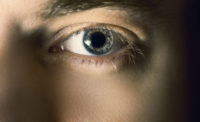The construction industry is full of potential hazards that could damage or injure your eyes. Sharp objects and flying debris can easily send one of your workers to the hospital. According to the Centers for Disease Control and Prevention (CDC), around 2,000 U.S. workers sustain work-related eye injuries each day that need medical attention. More than a hundred of these injuries result in one or more days away from work. Site managers need to make sure their workers are taking the proper steps to protect their eyes on the job. Learn more about the most common construction eye injuries and what you can do to keep your team safe.
Common construction eye injuries
Eye injuries can happen when you least expect them in the construction industry. The typical construction site is full of heavy machinery that can injure the eyes as well as less noticeable hazards like pollution and harmful light radiation. Construction eye injuries usually fall into one of the following categories:
Dust and debris
The vast majority of eye injuries result from the scraping and scratching of airborne debris, like dust, dirt, and small pieces of rock and metal. These contaminants can easily blow through the air and land in workers’ eyes. Dust and dirt are present in virtually all construction sites. These workplaces often have little to no shelter from the outdoors. Various activities can increase the spread of debris, including sawing, grinding, sanding, chiseling, and woodworking.
Impact and penetration
Various tools and pieces of equipment can also cause eye injuries. Sharp edges and points, including nails, screws, and staples, can penetrate the eyes, causing severe injury. Workers should use extreme caution and wear the proper safety eyewear and other PPE when using this equipment.
Chemicals
Some construction crews use various chemicals in the workplace, including toxic chemicals like acids, fuel, cleaners, and gels that can severely damage the eyes. Exposure to these chemicals can result in permanent injury as well, such as blindness or even death. These fluids can easily wind up in the wrong place when they are being used or moved in the workplace. Chemicals can splash or drip into a person’s eyes. They can also produce toxic fumes and mists that can affect the person’s ability to see.
Heat
Some construction equipment, such as blowtorches, furnaces, casters, and welding equipment can produce extreme temperatures. The heat and sparks generated by this equipment can injure a person’s eyes. The same is true of hot surfaces, including metal rods or forks.
Optical radiation
Some equipment may also produce optical radiation, including ultraviolet radiation (UV) and infrared radiation (IR). Exposure to any form of optical radiation can lead to permanent injury, including blindness.
How to prevent construction eye injuries
Construction crews need to ensure that they are protecting themselves from all the hazards mentioned above. Use the following steps to prevent work-related eye injuries onsite:
Identify all potential hazards
The manager should first conduct a thorough safety review of the construction site, including all of the equipment that will be used on the job. This includes airborne hazards and debris, falling objects, radiation, and pollution.
Choose the proper safety gear
Managers must choose the proper safety gear for the task at hand while protecting their workers from all potential hazards. Most workers in the construction industry wear safety glasses or goggles when they are onsite. The eye protection should fit over the person’s eyes without leaving any gaps in between their face and the seal to stop small particles from slipping through the cracks.
Eye protection that meets the American National Standards Institute/International Safety Equipment Association (ANSI/ISEA) standard for eye and face protection ensures protection from several common job hazards including impact, non-ionizing radiation, and liquid splash exposure.
If there will be hot equipment or optical radiation in the field, the goggles should be designed to protect the wearer from these hazards. The material should be strong enough to withstand a blow or puncture to the face. The goggles may also come with a shade that shields the person’s eyes from the sun to improve visibility.
Reduce employee exposure
Using this safety equipment, the manager should also focus on reducing their workers’ exposure to these hazards. This may include restricting access to the worksite during specific times, setting up tarps or dividers to block the spread of airborne particles, or increasing the distance between the worker and the hazard in question.
Employee training
Before the crew begins working, the manager should spend time discussing the latest safety procedures so workers can protect themselves in the field. The entire team should be aware of these potential hazards and know what to do in an emergency.
Workers should also know what to do if they get injured in the field. They should never rub their eyes if they get debris stuck in them, or they could further damage the surface. Rubbing can make the problem worse as debris can scratch the surface of the eye. First Aid, in the form of eye wash or an eye patch is an important first step. In more severe cases, workers should wait for medical help to arrive, so a trained professional can safely remove the debris.
Workers should remember to inspect and fit test their goggles before working in the field. If there is any space between their skin and the seal, particles can still get into their eyes. The goggles should come with an adjustable strap, so workers can easily fit the glasses to their face.
All safety gear should be kept in a clean and secure location, aware from sunlight and potential hazards that could tamper with the effectiveness of the PPE. Employees should return this gear to the correct location at the end of their shift. Workers should also clean their goggles often as they can get quite dirty with constant use. It’s best to use individual eye protection and avoid sharing to prevent the spread of disease as well as mucus and other bodily fluids.
Eye injuries tend to be common in the construction industry. Everyone onsite should be wearing the proper safety gear, even if they are only stopping by for a few minutes.
Construction professionals should keep this information in mind to keep eye injuries to a minimum.



